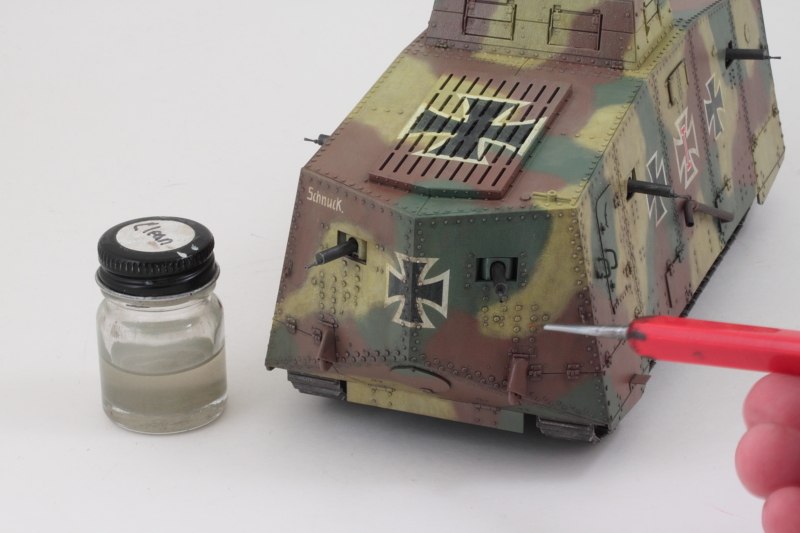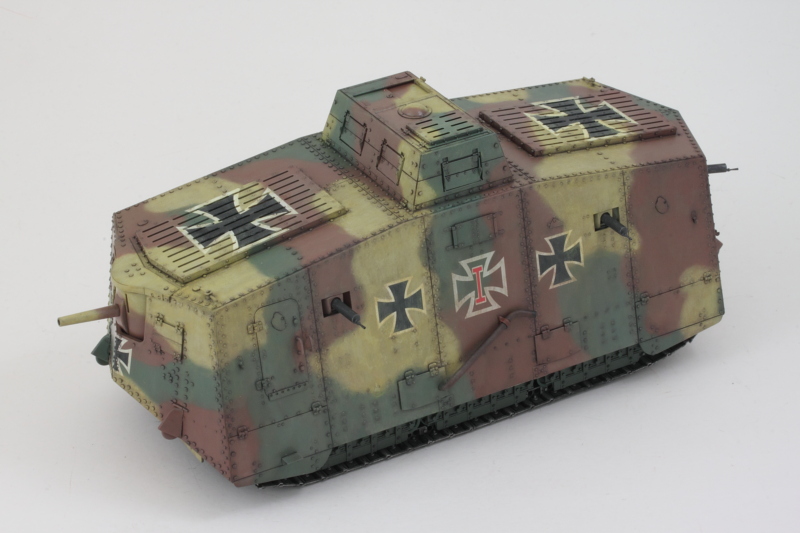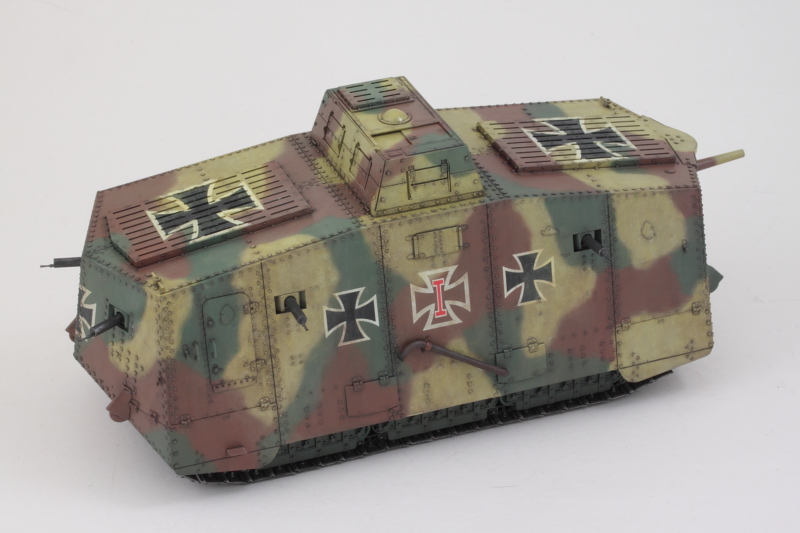WIP 07-26-2018
Posted: Fri Oct 07, 2022 7:21 pm
The next step in the weathering process proved to be even more time-intensive than I expected it would be. Normally, the application of a pin-wash is a single day exercise. This vehicle, however, is not normal in any respect when it comes to all the raised detail and rivets that are present.
I mixed my own wash using Model Master enamel Burnt Umber with about 90% thinner. I applied the wash with a pointed 10/0 brush to allow for more control and targeted dosing in the various places.

This process involves a lot of thinner fumes between the wash itself and the next step that tightens it up and removed the excess. That means a lot of time with the breather mask on! Using the same 10/0 brush and clean thinner, I combined an Optivisor with the breather mask so I could see up close what was happening with all the detail. I had to set a timer so I could remember to take frequent breaks and spread out the work over several days as well.

You don't realize just how many rivets there are until you do a process like this (or try to replace them with something else I suppose!). Just one long side of the hull took 2.5 hours to go through the process. In the end, it took a total of about 10 hours to do it all.


I'll let that sit for a bit so I can look it over with an unbiased eye to determine if there are any further adjustments/changes I want to make. Right now all I can see are rivets, rivets, and more rivets!
I mixed my own wash using Model Master enamel Burnt Umber with about 90% thinner. I applied the wash with a pointed 10/0 brush to allow for more control and targeted dosing in the various places.
This process involves a lot of thinner fumes between the wash itself and the next step that tightens it up and removed the excess. That means a lot of time with the breather mask on! Using the same 10/0 brush and clean thinner, I combined an Optivisor with the breather mask so I could see up close what was happening with all the detail. I had to set a timer so I could remember to take frequent breaks and spread out the work over several days as well.
You don't realize just how many rivets there are until you do a process like this (or try to replace them with something else I suppose!). Just one long side of the hull took 2.5 hours to go through the process. In the end, it took a total of about 10 hours to do it all.
I'll let that sit for a bit so I can look it over with an unbiased eye to determine if there are any further adjustments/changes I want to make. Right now all I can see are rivets, rivets, and more rivets!

